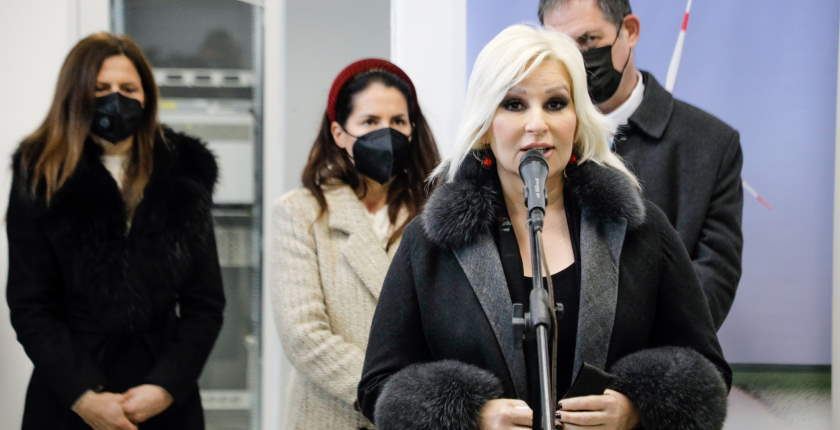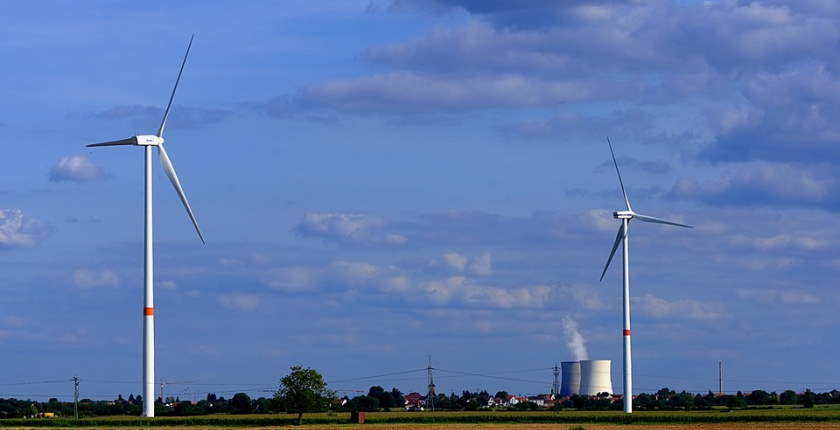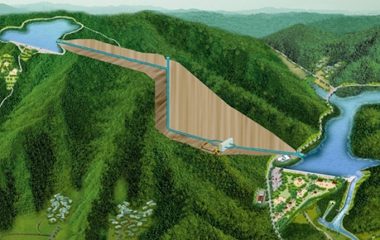
Photo: Facebook/Zorana Mihajlović
Deputy Prime Minister and Minister of Mining and Energy Zorana Mihajlović said Serbia’s goal is more investments in renewable energy in order to get to a 40% share by 2040. The target could be reached, and the new law on renewables is seen as a tool to develop a favorable regulatory framework for new investments. We reveal which investors are already developing projects, mostly wind farms.
Serbia’s share of renewable energy sources in final energy consumption is now 20%, compared to the 27% target for 2020 which it was obligated to reach as a member of the Energy Community.
Achieving a 40% share in 19 years is possible given the announced adoption of the first law on renewables, intended to facilitate investments with subsidies granted on auctions, but also without these incentives, on a market basis. According to available information, 2.7 GW of wind energy projects are in the pipeline. The country also has a large solar energy potential.
Mihajlović: 2021 will be a decisive year for the direction in which Serbian energy will move in the next 10, 20, 30 years
“We believe that this goal is realistic concerning Serbia’s potential in the renewables sector, as well as legislation, the readiness of authorities to create good conditions for investments, and the interest of investors,” Mihajlović said during a visit to Kovačica wind farm.
She added an energy permit was issued for wind farm Pupin, which will be an expansion of the Kovačica wind farm. The ministry told Balkan Green Energy News that the permit was issued to Enlight K2-Wind for the capacity of 95.5 MW. Enlight K2-Wind is owned by Israel-bsaed Enlight.
Pupin wind farm will have an installed capacity of 95.5 MW
Mihajlović said 2021 would be the year of great changes in the energy sector, the year that will determine the direction in which Serbian energy will go in the next 10, 20, 30 years.
Since 2014, wind power plants with a total capacity of 400 MW have been built, and two more that are under construction will bring the total close to 600 MW.
Wind farms Čibuk 1, Kovačica, Košava 1, Alibunar, Kula, Malibunar and La Piccolina are operational, while Plandište and Kostolac are being built.
Serbia wants more investments in other types of renewables, such as solar or geothermal energy, Mihajlović said, adding the new laws would speed up all procedures and introduce electronic issuance of all permits.
Developed projects waiting for the regulatory framework

Investors are currently developing projects with a total capacity of 2.7 GW. The European Bank for Reconstruction and Development (EBRD) is drafting the auction model, while the authorities are preparing the decision on quotas for auctions. It is clear a large portion of the capacities in the pipeline will have to be developed without market subsidies. In both cases, the investors are waiting for the legislative and regulatory frameworks to find out the rules of the game.
WV International NBT (formerly Windvision), which has recently partnered with Norway’s NBT AS, is developing the largest portfolio of projects, with a capacity of 800 MW. The target is to have all the wind farms in operation by 2026, with the first 168 MW coming online in 2023. The company is also developing solar power to diversify its green portfolio in Serbia.
United States–based CWP is currently developing a portfolio of a total of 500 MW, of which 300 MW in wind projects and the remainder in solar power. The company, led in Serbia by Maja Turković, has so far built a total of 1.6 GW of renewable energy capacity in Europe and Australia. During a recent conference on investments in wind farms she said auctions must be designed in such a way to be a means to create a market that will eventually lead to a situation where the state or, more precisely, citizens do not subsidize green energy.
The largest onshore wind farm in Europe is under development
The largest single project is the 600 MW Maestrale Ring, which would equal the capacity of the largest onshore wind farm in Europe – the Romanian Fântânele-Cogealac. The wind farm is supposed to be built near Subotica on almost 11,000 hectares. The investor is Fintel Energia, owned by Serbian and Italian firms. The company has already built three wind farms in Serbia: Kula, with a capacity of 9.9 MW, La Piccolina, with a capacity of 6.6 MW, and Košava 1, with a capacity of 69 MW.
Fintel is developing several more projects with a total capacity of 250 MW: Torak (120 MW), Košava 2 (68.4 MW), Kula 2, 3 and 4 (30 MW), Danube 1 and 2 (20 MW) and Ram (10 MW).
Investors led by Masdar from the United Arab Emirates own the largest wind farm in Serbia so far – the 158 MW Čibuk 1. They are preparing another project, Čibuk 2, envisaged to have 300 MW. A new wind farm will be built in Bavanište and Mramorak, not far from Pančevo and Kovin in Serbia’s northeast. The first phase, with a capacity of 150 MW, should start in 2023, and the construction of the second phase is scheduled to begin one year after that.
Investors are from Norway, Italy, UAE, France, Russia, Belgium, Austria, Serbia
Belgium’s Elicio Wind, which has already built two wind farms in Serbia: Alibunar (42 MW) and Malibunar (8 MW), also intends to continue investing. On the territory of the City of Pančevo, it is developing several projects with a capacity of 200 MW.
Russian investors are also present on the market in Serbia. Oil and gas company NIS, whose majority owner is Gazpromneft, is working with MET Renewables on the 102 MW Plandište wind farm. It is a project which, like the Kostolac wind farm, entered the original quota of 500 MW, distributed on a first-come-first-served basis. A 200 MW wind farm is also being developed by Gazprom Energoholding Serbia, and Vestas could become its partner.
After the Kostolac wind farm, with a capacity of 66 MW, which is being developed by state-owned power utility Elektroprivreda Srbije (EPS), Serbia could get yet another wind farm outside of the northern Vojvodina province. Company Crni Vrh Power intends to install 40 wind turbines on the border of the municipalities of Žagubica, Bor and Majdanpek. Nikola Petrović, former director of transmission system operator Elektromreža Srbija (EMS), co-owns the firm. The first mentioned capacity was 50 MW power with 21 wind turbines, but according to the latest information, the capacity will be changed.
French renewables developer IEL OIE Balkan Renewable Energy has announced the start of construction of the 85 MW Bašaid wind farm near Kikinda for this year. The firm’s partner is also a French company, Akuo Energy Central Europe, which is very active in the region.
Another company that invests in green energy in the region, Austria’s Ivicom Energy, is developing the 103 MW Krivača wind farm. The project is planned on about 242 hectares in the municipalities of Golubac, Kučevo and Veliko Gradište. The project will be the third wind farm which won’t be built in Vojvodina. The number of wind turbines was 38 at the start, but will be reduced to 22 with an increase in their individual power.
Solar boom is coming to Serbia
While Serbia cannot be satisfied with the wind farms installed so far if we compare it to the potential, solar energy has been completely neglected. So far, about 20 MW of solar power capacity has come online in Serbia, all in small-scale units.
Experts estimate the new law would provide a very favorable framework for investments in solar power plants and that it could lead to a solar energy boom over the next five to 10 years.
Solar in Serbia could be an opportunity for citizens to reduce electricity bills and to reduce environmental pollution by installing solar panels on roofs. But there is also the potential to build utility-scale capacities and increase the use of solar energy in companies, which could produce electricity for self-consumption.
The new Law on Renewable Energy Sources will open the door for wider use of solar energy in Serbia, but much more remains to be done to make that happen, primarily through bylaws. The issues around solar will be discussed at the First Big Conference on Solar Energy in Serbia, organized by Balkan Green Energy News. It will be held in Belgrade on April 14.


















Be the first one to comment on this article.